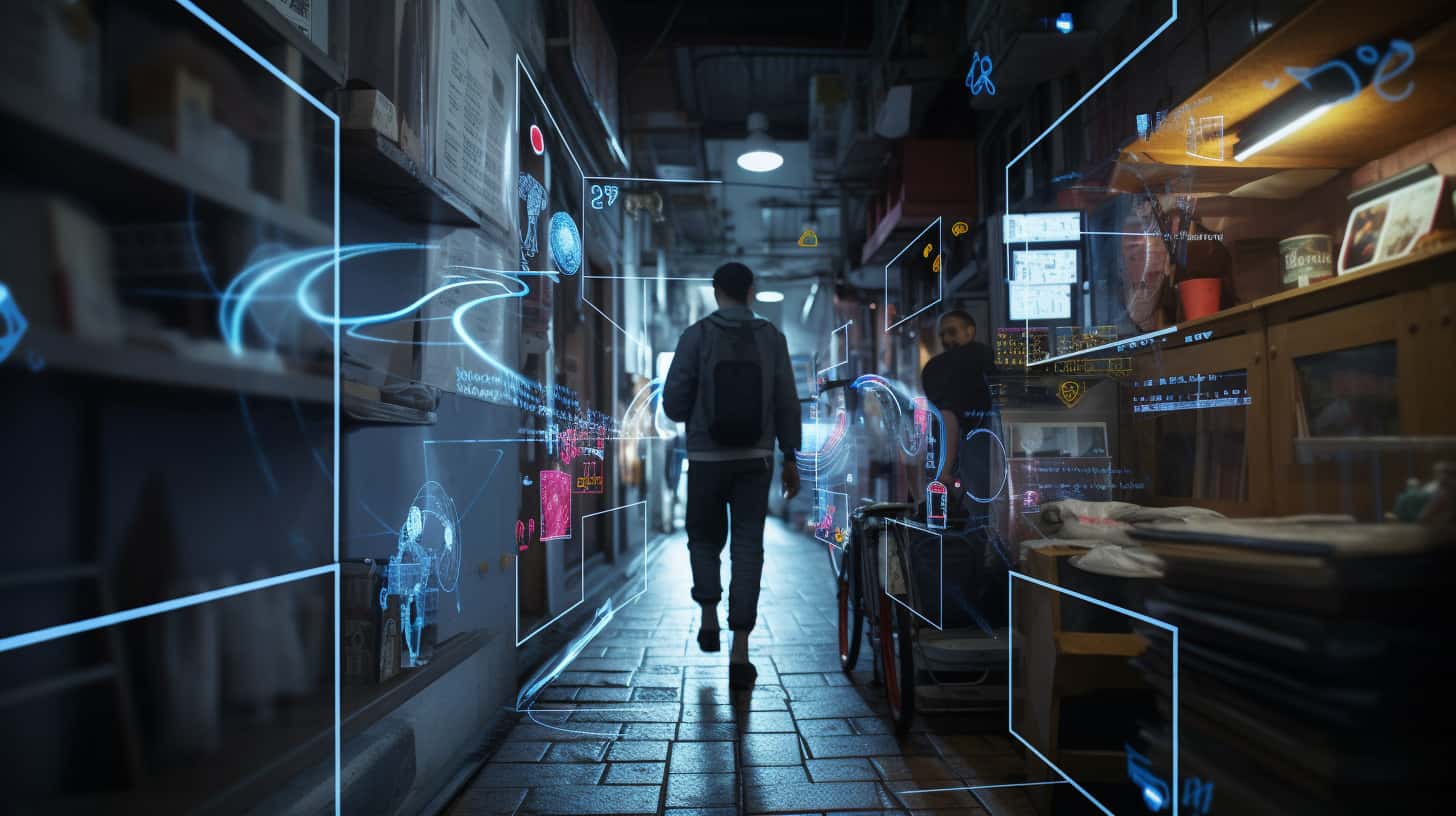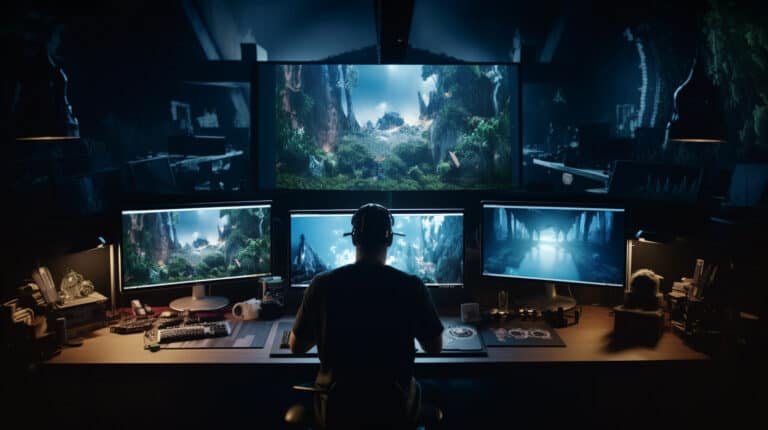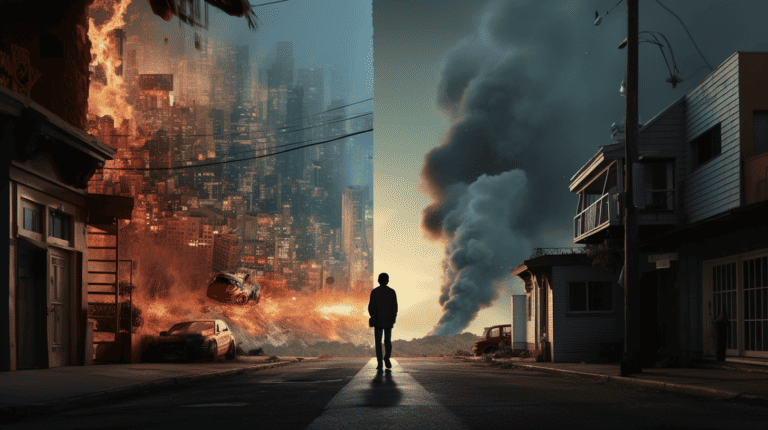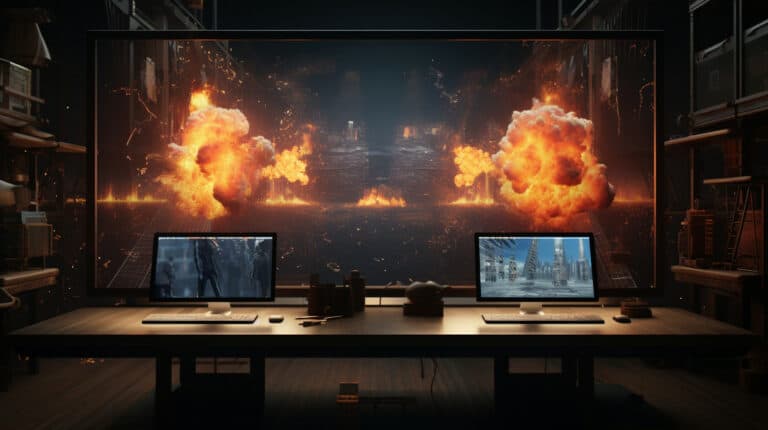How Much Do VFX Cost: An Industry Overview
Have you ever wondered how much it costs to bring those mind-blowing visual effects to life? Buckle up as we take you on a thrilling journey through the world of visual effects costs.
In this industry overview, we’ll explore the factors that drive costs, delve into different types of visual effects and their price tags, and even provide case studies of popular films.
Get ready to uncover the secrets behind the magic and discover strategies for managing visual effects costs.
It’s time to dive into the fascinating world of visual effects costs!
Key Points:
- Visual effects have become integral to the entertainment industry, enhancing the overall experience of films, TV shows, and video games.
- The complexity of visual effects impacts costs, with more intricate effects requiring skilled artists, advanced software, and extensive resources.
- Different types of visual effects, such as 2D, 3D, special effects, and motion capture, have their own set of challenges and expenses.
- Effective budgeting and cost estimation techniques, collaboration between production and VFX teams, and the utilization of cost-saving techniques and technologies are important in managing visual effects costs.
The importance of visual effects in the entertainment industry
Visual effects have become an integral part of the entertainment industry, captivating audiences with their ability to create stunning and immersive visual worlds. As the demand for high-quality visual effects continues to grow, so does the complexity and cost of producing them.
In this article, we’ll explore the importance of visual effects and delve into the factors that contribute to their increasing expenses in the industry.
In the entertainment industry, visual effects play a crucial role in captivating and immersing audiences. They’ve become an integral part of films, TV shows, and even video games, enhancing the overall experience and bringing fantastical worlds to life.
But have you ever wondered how much visual effects cost? The answer isn’t a simple one. The cost of visual effects can vary greatly depending on the complexity of the project, the quality desired, and the expertise of the artists involved.
From creating realistic creatures and breathtaking environments to adding explosions and futuristic technology, visual effects require a significant investment of time, resources, and talent.
The growing demand for high-quality visual effects
To understand the importance of high-quality visual effects in the entertainment industry, you must recognize the growing demand for stunning and immersive visuals. Audiences today have come to expect nothing less than extraordinary visual experiences that transport them to new worlds and captivate their senses. This demand has been driven by advancements in technology and the increasing popularity of visually-driven genres like superhero movies and fantasy epics. As a result, filmmakers and studios are under pressure to deliver cutting-edge visual effects that not only meet but exceed these expectations. The table below illustrates the growing demand for high-quality visual effects by showcasing the box office performance of films that heavily rely on visual effects.
| Film | Worldwide Box Office Gross (in billions) | Visual Effects Budget (in millions) |
|---|---|---|
| Avengers: Endgame | $2.798 | $356 |
| Avatar | $2.789 | $237 |
| The Lion King (2019) | $1.657 | $260 |
These numbers clearly demonstrate the financial success of films with high-quality visual effects. Audiences are willing to pay top dollar for movies that provide them with visually stunning and immersive experiences. This growing demand for high-quality visual effects has not only elevated the standards of the industry but also created new opportunities for visual effects artists and technicians to showcase their talents. As the demand continues to rise, it is crucial for filmmakers and studios to invest in cutting-edge technology and top-notch talent to deliver the mind-blowing visual effects that audiences crave.
Factors Affecting Visual Effects Costs
When it comes to visual effects costs, there are several factors that can significantly impact the final price tag.
Consider the complexity of the visual effects required – intricate and realistic effects will require more time and resources.
Additionally, the timeframe and deadlines for the project can affect costs, as rushed or tight schedules may require additional manpower and expedited processes.
Lastly, the skill level and experience of the visual effects team, the equipment and software requirements, as well as the location and labor costs should all be taken into account when estimating the overall expenses.
Complexity of the visual effects required
Understanding the complexity of the visual effects required significantly impacts the costs involved in the industry. Visual effects can range from simple enhancements to complete recreations of entire environments. The more intricate and detailed the effects, the higher the cost.
Complex visual effects require skilled artists, advanced software, and extensive time and resources to create. From creating realistic explosions to bringing imaginary creatures to life, the complexity of the visual effects adds depth and realism to films, television shows, and commercials. However, this complexity also comes with a price tag. The more complex the effects, the more time and expertise are needed, resulting in higher costs for production.
As we delve into the discussion of timeframe and deadlines, it becomes evident how the complexity of visual effects impacts not only the costs but also the overall production process.
Timeframe and deadlines
You need to consider the impact of time constraints and deadlines on the costs of visual effects in the industry. Meeting tight deadlines often requires additional resources and manpower, leading to increased costs.
Here are three factors to consider:
- Rush fees: When there’s limited time for production, visual effects studios may charge extra for prioritizing your project and working overtime to meet the deadline. This can significantly add to the overall cost.
- Iterations and revisions: Tight deadlines may limit the number of iterations and revisions you can make, potentially affecting the quality of the final product. Additional rounds of revisions may require more time and resources, resulting in increased costs.
- Efficiency and planning: Effective project management and planning can help streamline the production process, reducing costs associated with rushed work and last-minute changes. Allocating ample time for pre-production and clear communication can lead to more efficient workflows and ultimately lower costs.
Considering these factors will help you navigate the intricate relationship between time constraints, deadlines, and visual effects costs.
Skill level and experience of the visual effects team
Considering the impact of the skill level and experience of the visual effects team is crucial in understanding the factors that affect visual effects costs. The skill and experience of the team can significantly influence the quality and efficiency of the work, ultimately affecting the overall cost. A highly skilled and experienced team can deliver exceptional visual effects with greater ease and speed, resulting in lower costs. On the other hand, a less experienced team may require more time and resources to achieve the desired outcome, leading to higher costs. It is important to recognize that expertise and experience are invaluable assets in the visual effects industry, and investing in a skilled team can ultimately save both time and money.
| Skill Level | Experience | Impact on Costs |
|---|---|---|
| High | Extensive | Lower |
| Medium | Moderate | Moderate |
| Low | Limited | Higher |
This table illustrates the relationship between skill level, experience, and their impact on costs. A team with high skill level and extensive experience tends to have a lower impact on costs, as they can efficiently tackle complex tasks. Conversely, a team with lower skill levels and limited experience may result in higher costs due to longer production times and potential errors. It is crucial to strike a balance between skill level, experience, and budget to ensure the optimal outcome for visual effects projects.
Equipment and software requirements
The equipment and software requirements play a significant role in determining the costs of visual effects. Here are three key factors that contribute to the overall expenses:
- High-performance hardware: To handle the complex calculations and rendering required for visual effects, powerful computers and workstations are necessary. These machines come at a premium price, adding to the overall cost.
- Specialized software: Visual effects artists rely on industry-standard software like Autodesk Maya, Nuke, and Adobe After Effects. These tools aren’t only expensive to purchase but also require regular updates and licensing fees, further increasing the expenses.
- Storage and backup solutions: Visual effects projects generate massive amounts of data that need to be stored securely and backed up regularly. Investing in reliable storage solutions, such as high-capacity servers and backup systems, is crucial but can also be costly.
Considering these factors, it becomes evident that the equipment and software requirements significantly impact the overall costs of visual effects production.
Location and labor costs
Moving on to the next factor that affects the costs of visual effects production, let’s delve into the impact of location and labor costs.
When it comes to visual effects, location can play a significant role in determining the overall cost of a project. Different countries and regions have varying labor rates and cost of living, which directly affects the price of hiring visual effects artists and technicians. For example, hiring a team in a major city like Los Angeles or London may be considerably more expensive than hiring a team in a smaller city or a country with lower labor costs. Additionally, the availability of skilled talent in a particular location can also influence costs.
By understanding the impact of location and labor costs, visual effects studios can strategically plan and budget for their projects.
Now, let’s explore the various types of visual effects and their associated costs.
Types of Visual Effects and Their Costs
When it comes to visual effects, there are various types that can greatly impact the overall cost.
2D visual effects involve manipulating existing footage, while 3D visual effects create entirely new elements.
Special effects bring fantastical elements to life, while motion capture allows for realistic character movements.
Each type comes with its own set of challenges and expenses, making it crucial to understand the different costs associated with each.
2D Visual Effects
To understand the costs associated with visual effects, you need to consider the various types of visual effects and their corresponding expenses. When it comes to 3D visual effects, the costs can vary depending on the complexity and length of the shots. Here are three factors that can impact the expenses:
- Level of Detail: The more intricate and realistic the 3D elements need to be, the higher the cost. Creating lifelike textures, lighting, and physics simulations requires specialized skills and software.
- Number of Shots: The more shots that require 3D effects, the greater the cost. Each shot requires time and resources to create and render, which can add up quickly.
- Timeframe: Tight deadlines can increase the cost of 3D visual effects. Rushing the process may require additional manpower or overtime pay to meet the required delivery date.
Now, let’s delve deeper into the world of 3D visual effects and explore the specific challenges and costs associated with this fascinating aspect of the industry.
3D Visual Effects
You can categorize 3D visual effects into different types, each with its own specific costs and challenges.
The first type is character animation, which involves creating lifelike and believable digital characters. This requires expert skills in modeling, rigging, and animation and can be quite expensive due to the time and talent required.
The second type is environmental effects, which involve creating realistic and immersive digital environments. This can include anything from creating vast landscapes to simulating natural phenomena like fire or water. Environmental effects can also be costly, as they often require extensive technical expertise and complex software simulations.
Lastly, there are special effects, which encompass a wide range of visual elements such as explosions, particle systems, and simulations. These effects can be challenging to create and require meticulous attention to detail. The cost of special effects can vary depending on the complexity and scale of the desired effect.
Special Effects
Special effects in visual effects production come in various types and can vary in cost. These effects play a crucial role in creating realistic and immersive experiences for the audience. Here are three types of special effects and their costs:
- Practical Effects: These effects involve physical elements like explosions, miniatures, and prosthetics. They require skilled technicians and materials, making them more expensive than other types of effects.
- CGI Effects: Computer-generated imagery (CGI) effects are created using digital tools and software. The cost of CGI effects can vary depending on the complexity and detail required. High-quality CGI can be costly due to the time and expertise needed for production.
- Hybrid Effects: Hybrid effects combine practical and CGI elements to achieve the desired outcome. These effects offer a balance between realism and flexibility, but they can also be more expensive due to the combination of physical and digital resources.
Understanding the types and costs of special effects is crucial for budgeting and planning in visual effects production.
Motion Capture
When considering the costs of visual effects, it’s essential to understand the expenses associated with motion capture. Motion capture, or mocap, is a technique used in the film and gaming industry to capture the movements of actors or objects and translate them into computer-generated characters or effects. It offers a level of realism that’s difficult to achieve through other means.
However, motion capture comes with its own set of costs. The expenses can vary depending on factors such as the complexity of the project, the number of actors involved, and the level of detail required. Additional costs may include hiring specialized technicians, renting or building a mocap studio, and post-production work.
Understanding these costs is crucial for budgeting and ensuring the success of your visual effects project.
Cost Breakdown of Visual Effects
When it comes to the cost breakdown of visual effects, there are several key points to consider.
Firstly, pre-production costs encompass the planning and conceptualization of the visual effects, including storyboards and pre-visualization.
Secondly, production costs involve the actual filming and capturing of the necessary elements for the visual effects.
Thirdly, post-production costs include the editing, compositing, and rendering processes.
Lastly, additional costs and contingencies are essential to account for unforeseen circumstances or changes that may arise during production.
Pre-production costs
Before you can start creating visual effects, it’s essential to consider the pre-production costs involved in the process. These costs, although often overlooked, play a crucial role in ensuring the success of the visual effects project.
Here are three key aspects of pre-production costs that you should be aware of:
- Concept Development: This phase involves brainstorming and ideation, where the creative team conceptualizes the visual effects required for the project. It includes storyboarding, concept art, and initial design work, which helps establish the overall vision and direction of the project.
- Pre-visualization: Pre-visualization allows the team to create a rough version of the final visual effects sequence. It helps in planning and visualizing the shots, camera movements, and overall composition, ensuring a more efficient production process.
- Location Scouting: For projects involving live-action footage, location scouting is a crucial pre-production activity. It involves finding suitable locations that align with the project’s requirements, which can significantly impact the final visual effects budget.
Considering these pre-production costs is essential for a successful visual effects project, as they lay the foundation for the entire production process.
Production costs
Now that you have considered the pre-production costs involved in visual effects, let’s delve into the production costs and break down the expenses associated with creating visual effects.
The production phase is where the magic happens, where the meticulously planned pre-production work takes shape. This is where the artists, animators, and technicians bring the director’s vision to life. But it comes at a price.
The cost breakdown of visual effects production includes expenses such as labor, equipment, software, and materials. Skilled artists and technicians, armed with state-of-the-art software and hardware, work tirelessly to create stunning visual effects that captivate audiences. The complexity of the effects, the level of detail required, and the number of shots all contribute to the overall production costs.
It’s a meticulous process that demands attention and precision, resulting in awe-inspiring visuals on the big screen.
Post-production costs
To understand the cost breakdown of visual effects, you need to consider the various expenses incurred during the post-production phase. This is where the magic happens, where the raw footage is transformed into a visual spectacle. So, what are the key costs you should be aware of?
- Labor: Skilled artists and technicians are required to bring the visual effects to life. Their expertise and time are invaluable, and their salaries contribute significantly to the post-production costs.
- Software and Hardware: Cutting-edge software and powerful hardware are essential tools in the creation of visual effects. From rendering to compositing, the right technology is crucial for achieving high-quality results.
- Data Storage and Transfer: Massive amounts of data are generated during the post-production process. Storing and transferring this data securely and efficiently can be a significant expense.
Understanding these costs will help you appreciate the complexity and investment involved in creating captivating visual effects. It’s a fascinating world where creativity meets technology, and every penny spent is dedicated to enhancing the visual storytelling experience.
Additional costs and contingencies
Factor in the additional costs and contingencies when breaking down the expenses of visual effects in the industry. While the initial budget may cover the basic requirements, there are often unexpected expenses that arise throughout the production process.
These can include changes in creative direction, technical issues, or even reshoots. These additional costs can quickly add up, leading to budget overruns and delays. Contingencies also play a crucial role in managing unforeseen circumstances. Setting aside a percentage of the budget specifically for contingencies helps ensure that there are resources available to address any unexpected challenges that may arise.
By accounting for these additional costs and contingencies, filmmakers can better manage their budgets and ensure the smooth execution of visual effects in their projects.
Now let’s move on to explore some case studies that highlight the visual effects costs in popular films.
Case Studies: Visual Effects Costs in Popular Films
Ever wondered how much it costs to create the mind-blowing visual effects in your favorite films?
Let’s take a closer look at some case studies to get a glimpse into the budgets and breakdown of visual effects costs.
From Film A to Film C, we’ll explore the financial investment and intricate details behind bringing these cinematic wonders to life.
Film A: Budget and breakdown of visual effects costs
Film A’s visual effects budget and breakdown are essential to understanding the costs associated with creating visual effects in popular films. Here is a breakdown of the visual effects costs for Film A:
- Pre-production: The first stage involves conceptualizing and planning the visual effects. This includes storyboarding, creating digital assets, and developing the overall visual style. The pre-production costs for Film A’s visual effects were significant, as careful planning is crucial for successful execution.
- Production: During production, the visual effects team captures the necessary footage and elements to be used in post-production. This includes filming on green screens, capturing motion data, and gathering reference material. The production costs for Film A’s visual effects involved the use of advanced equipment and techniques to capture high-quality footage.
- Post-production: The final stage involves the actual creation of the visual effects. This includes compositing, CGI animation, matte painting, and digital enhancement. The post-production costs for Film A’s visual effects were substantial, as the team worked tirelessly to bring the director’s vision to life.
Understanding the breakdown of these costs gives us insight into the complexity and investment required to create visual effects in popular films like Film A.
Film B: Budget and breakdown of visual effects costs
To understand the budget and breakdown of visual effects costs in popular films, let’s take a closer look at Film B.
This film, like many others, relied heavily on visual effects to bring its story to life. The intricate details and stunning visuals captivated audiences and created a truly immersive experience. However, such craftsmanship comes at a price.
The cost of visual effects in Film B was significant, with a substantial portion of the budget allocated to this aspect of production. From the seamless integration of CGI characters to the breathtaking landscapes, every frame was meticulously crafted to perfection.
As we delve further into the breakdown of visual effects costs in Film B, we’ll gain a deeper understanding of the magnitude and complexity involved in creating these awe-inspiring visuals.
Now, let’s move on to Film C and explore its budget and breakdown of visual effects costs.
Film C: Budget and breakdown of visual effects costs
Now let’s explore the budget and breakdown of visual effects costs in Film C, taking into account case studies of visual effects costs in popular films.
When it comes to the world of visual effects, there’s no one-size-fits-all approach. Each film presents its unique set of challenges and demands, which directly impact the costs involved.
So, what factors contribute to the visual effects budget of Film C? Here are three key considerations:
- Scope of visual effects: The more complex and extensive the visual effects required, the higher the costs. From creating fantastical creatures to building entire digital environments, intricate visual effects demand significant resources and expertise.
- Level of detail: The level of detail required in the visual effects can greatly impact the budget. From realistic skin textures to intricate hair and fur simulations, achieving a high level of detail often involves additional time and resources.
- Production timeline: The timeframe in which the visual effects need to be completed can also affect the budget. Tight deadlines may require additional resources or overtime, leading to increased costs.
Strategies for Managing Visual Effects Costs
Want to keep your visual effects costs under control? Start by implementing effective budgeting and cost estimation techniques to accurately predict expenses.
Foster collaboration and open communication between your production and visual effects teams to ensure everyone is on the same page.
Additionally, take advantage of cost-saving techniques and technologies, such as utilizing pre-built assets or leveraging cloud rendering services.
Effective budgeting and cost estimation techniques
When managing visual effects costs, it’s essential to be strategic in your budgeting and estimation techniques. Here are three effective strategies for managing visual effects costs:
- Break down the project:
Start by breaking down the project into smaller components or shots. This will help you identify the specific visual effects required for each shot and allocate resources accordingly. By taking a granular approach, you can avoid overestimating or underestimating the costs.
- Collaborate with the VFX team:
Involve your visual effects team in the budgeting and estimation process. Their expertise can provide valuable insights into the level of complexity and resources required for each effect. By working together, you can ensure accurate cost estimations and avoid unexpected surprises later on.
- Prioritize and plan ahead:
Determine the essential visual effects needed for your project and prioritize them based on their impact on storytelling. By planning ahead and focusing on the most critical effects, you can allocate your budget wisely and avoid overspending on unnecessary elements.
Collaboration and communication between production and visual effects teams
To effectively manage visual effects costs, collaborate and communicate between the production and visual effects teams.
The key to successful collaboration is establishing clear lines of communication and maintaining open dialogue throughout the entire production process.
By working together closely, the production team can provide the visual effects team with a comprehensive understanding of their vision and creative goals, while the visual effects team can offer valuable insight into the technical and logistical considerations.
This collaborative approach ensures that everyone is on the same page and can make informed decisions that align with the project’s budgetary constraints.
Additionally, effective communication helps to identify any potential issues or challenges early on, allowing for proactive problem-solving and cost-effective solutions.
By fostering collaboration and communication between the production and visual effects teams, the overall visual effects costs can be managed more effectively.
With this foundation in place, it becomes easier to implement cost-saving techniques and technologies that further optimize the budget and deliver high-quality visual effects.
Utilizing cost-saving techniques and technologies
Use cost-saving techniques and technologies to manage visual effects costs more effectively. Here are three strategies that can help you achieve this:
- Embrace cloud computing: By utilizing cloud-based rendering services, you can offload the processing power required for rendering visual effects shots. This eliminates the need for expensive on-site hardware and software, reducing costs significantly.
- Implement virtual production: Virtual production techniques, such as using LED walls and real-time rendering engines, can save both time and money. By creating virtual environments and effects in real-time during filming, you can minimize the need for costly post-production work.
- Utilize AI and machine learning: These technologies can automate repetitive tasks, such as rotoscoping or motion tracking, which are time-consuming and expensive. By leveraging AI and machine learning algorithms, you can streamline these processes and reduce labor costs.
By implementing these cost-saving techniques and technologies, you can effectively manage visual effects costs while maintaining the quality of your work.
Now, let’s explore the next step: negotiating contracts and managing vendor relationships.
Negotiating contracts and managing vendor relationships
Now it’s time to negotiate contracts and manage vendor relationships to further manage visual effects costs effectively. When it comes to negotiating contracts, it’s crucial to ensure that all parties involved are clear on the scope of work, deliverables, timelines, and payment terms. By establishing a clear agreement from the start, you can avoid any misunderstandings or disputes down the line. Additionally, managing vendor relationships is essential for maintaining a productive and cost-effective workflow. Building strong relationships with vendors can lead to better communication, faster turnaround times, and even potential cost savings through long-term partnerships. Regularly evaluating vendor performance and addressing any issues promptly will help ensure that your visual effects projects stay on budget and on schedule.
| Negotiating Contracts and Managing Vendor Relationships | ||
|---|---|---|
| Negotiating Contracts | Managing Vendor Relationships | Benefits |
| Clearly define scope, deliverables, timelines, and payment terms. | Establish strong relationships with vendors. | Prevent misunderstandings or disputes. |
| Ensure all parties are aware of their responsibilities. | Regularly evaluate vendor performance. | Improve communication and workflow. |
| Address any issues promptly. | Foster long-term partnerships. | Increase efficiency and potential cost savings. |
The Future of Visual Effects Costs
As technology continues to advance at a rapid pace, the future of visual effects costs becomes a topic of great interest and speculation. How will these advancements impact the costs associated with creating stunning visual effects?
Furthermore, what emerging trends in visual effects production will shape the future landscape and potentially influence costs?
It’s crucial to explore these questions and make predictions about the future of visual effects costs in order to anticipate and adapt to the changing dynamics of the industry.
Advancements in technology and their impact on costs
You can expect significant changes in visual effects costs due to advancements in technology and their impact on the industry.
As technology continues to evolve, the way visual effects are created and implemented will also change.
Here are three ways advancements in technology will impact visual effects costs:
- Increased Efficiency: As technology improves, visual effects artists will have access to more efficient tools and software. This will allow them to create high-quality effects in less time, reducing the overall cost of production.
- Real-Time Rendering: With the development of real-time rendering technology, visual effects can be created and viewed instantly, eliminating the need for time-consuming rendering processes. This will significantly reduce production costs and enable faster turnarounds.
- Automation and Machine Learning: Advancements in automation and machine learning will streamline the visual effects creation process. Tasks that were previously done manually can now be automated, reducing the need for extensive manual labor and ultimately lowering costs.
As technology continues to advance, the future of visual effects costs holds great promise for both the industry and consumers.
Emerging trends in visual effects production and their cost implications
The future of visual effects costs holds promising implications for the industry and consumers as emerging trends in production continue to shape the landscape. The advancements in technology have paved the way for new and exciting possibilities in visual effects, but they have also brought about challenges in terms of cost. However, with each passing year, the industry is witnessing innovative approaches that not only enhance the quality of visual effects but also reduce production costs. Let’s take a look at some of these emerging trends and their cost implications in the table below:
| Emerging Trends | Cost Implications |
|---|---|
| Virtual Production | Decreased costs |
| AI in Visual Effects | Increased costs |
| Cloud Rendering | Decreased costs |
| Real-time Rendering | Increased costs |
These trends are reshaping the visual effects industry, providing new opportunities for cost savings, and pushing the boundaries of what is possible in visual storytelling. As technology continues to evolve, it will be fascinating to see how these trends further impact the future of visual effects costs.
Predictions for the future of visual effects costs
In the future, visual effects costs are expected to undergo significant changes in the industry. As technology continues to advance, the way visual effects are created and implemented will evolve, ultimately affecting the cost considerations. Here are three predictions for the future of visual effects costs:
- Increased accessibility: With advancements in software and hardware, visual effects tools will become more accessible to a wider range of users. This could lead to a decrease in costs as more individuals and smaller studios are able to create high-quality effects without the need for expensive equipment or large teams.
- Real-time rendering: Real-time rendering technologies are improving rapidly, allowing for instant feedback and adjustments during the production process. This could potentially reduce the time and resources required for rendering, resulting in cost savings for studios.
- AI-driven automation: As artificial intelligence continues to advance, it’s likely to play a bigger role in automating certain aspects of the visual effects pipeline. This could lead to increased efficiency and cost savings as AI algorithms take over repetitive tasks, freeing up artists to focus on more creative aspects of their work.
These predictions highlight the potential for a more accessible, efficient, and cost-effective future for visual effects in the industry.
Conclusion
As you reflect on the key factors affecting visual effects costs, you realize the importance of budgeting and cost management in the production process.
It becomes clear that in order to navigate the ever-evolving landscape of visual effects, careful consideration of financial aspects is necessary.
As you consider the future of visual effects costs, you’re left with a sense of anticipation and curiosity about how the industry will continue to adapt and innovate in the face of changing demands and technologies.
Recap of key factors affecting visual effects costs
To fully understand the impact of visual effects costs on the industry, it’s essential for you to consider the various factors that affect these expenses. Here is a recap of the key factors that can significantly influence the cost of visual effects:
- Complexity of the effects: The more complex and intricate the visual effects required, the higher the cost. This includes factors such as the level of detail, the number of elements, and the level of realism needed.
- Timeframe and deadlines: Tight deadlines can increase the cost of visual effects as it requires more resources to meet the timeline. Rushing the process can lead to additional costs for overtime, expedited equipment, and additional staff.
- Skill and experience of the team: The expertise and experience of the visual effects team can impact the cost. Highly skilled professionals may charge more for their services, but their expertise can also result in more efficient and effective execution of the visual effects.
Considering these factors will help you better understand why visual effects costs can vary greatly and enable you to make informed decisions regarding your project.
Importance of budgeting and cost management in visual effects production
Budgeting and cost management play a crucial role in ensuring the successful production of visual effects. Without proper budgeting, projects can quickly spiral out of control, leading to unnecessary expenses and delays. By carefully managing costs, production teams can allocate resources efficiently, making sure that every dollar is spent wisely. Not only does this help keep the project within budget, but it also allows for better planning and decision-making throughout the production process.
To emphasize the importance of budgeting and cost management, let’s take a look at a table showcasing the potential consequences of poor financial planning:
| Consequence | Impact | Solution |
|---|---|---|
| Over budget | Financial strain | Regular budget reviews |
| Delays in production | Missed deadlines | Realistic scheduling |
| Compromised quality | Subpar visual effects | Prioritizing essential tasks |
| Inefficient resource allocation | Wasted time and money | Detailed project planning |
Final thoughts on the future of visual effects costs
Looking ahead, you can expect the future of visual effects costs to be influenced by advancements in technology and shifts in industry demand. As the visual effects industry continues to evolve, here are three key factors that will shape the future of costs:
- Emergence of new technologies: With the rapid development of virtual reality, augmented reality, and real-time rendering, there will be a growing demand for complex and immersive visual effects. However, these advancements will also require additional investment in hardware, software, and specialized talent.
- Changing industry dynamics: As streaming platforms gain prominence and traditional distribution models evolve, visual effects will play a crucial role in capturing audience attention and enhancing storytelling. This increased demand for high-quality effects will likely result in higher costs as studios compete to deliver cutting-edge visuals.
- Globalization of visual effects production: The globalization of the visual effects industry has led to the rise of studios in various countries, offering competitive pricing and specialized expertise. This trend will continue to impact costs as studios seek to optimize their budgets by outsourcing certain aspects of production to regions with lower labor costs.
Frequently Asked Questions
What Are the Most Common Challenges Faced by Visual Effects Artists in Managing Costs?
Managing costs as a visual effects artist can be challenging. Balancing quality and budget, dealing with tight deadlines, and staying up-to-date with technology are common hurdles you face. It’s a demanding but rewarding field.
How Do Visual Effects Costs Differ Between Different Genres of Films?
When it comes to visual effects costs in different genres of films, you’ll find that the expenses can vary greatly. Factors such as the level of complexity, the number of VFX shots, and the overall scale of the film all play a role in determining the final cost.
Are There Any Specific Government Regulations or Incentives That Affect Visual Effects Costs?
There may be specific government regulations or incentives that affect visual effects costs. These factors can vary depending on the country or region and can impact the overall expenses in the industry.
What Are Some Lesser-Known Types of Visual Effects That Can Greatly Impact the Overall Cost?
Some lesser-known types of visual effects can greatly impact the overall cost. It’s important to consider effects like motion capture, virtual reality, and 3D printing, as they require specialized equipment and expertise.
How Do Visual Effects Costs Vary Between Different Countries or Regions?
Visual effects costs vary between countries and regions due to factors like labor costs, tax incentives, and available talent pool. Understanding these variations can help you make informed decisions when choosing where to produce your visual effects.







